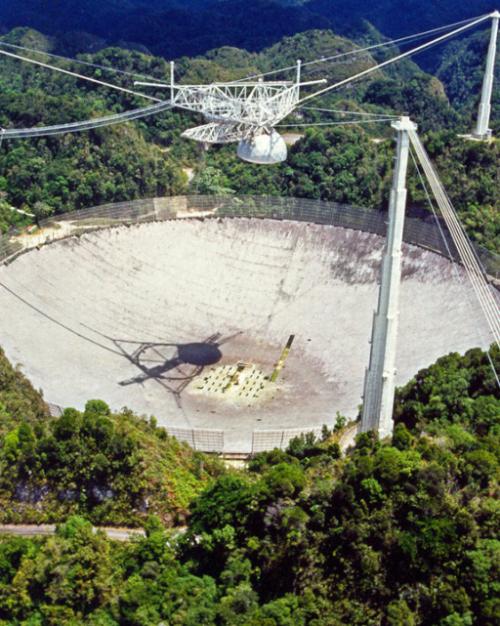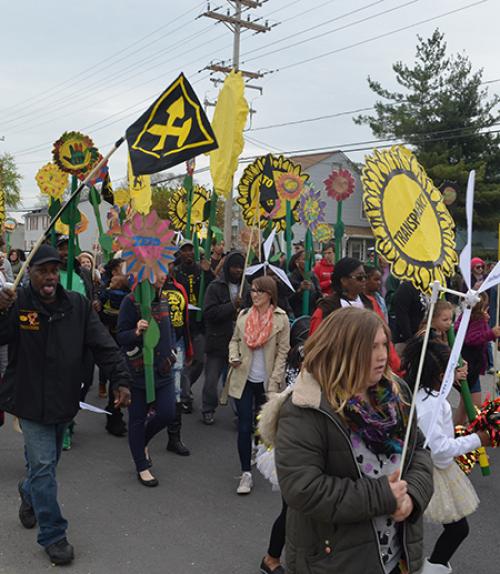The term “late industrialism” has become synonymous with collapse: breakdown, pollution, waste and disappointment left behind by failing or exploitive systems.
But the “late” in “late industrial” also carries radical potential, according to Chloe Ahmann, assistant professor of anthropology in the College of Arts and Sciences.
“It points toward the possibility of another world taking shape within the wreckage,” she said, “as people retrofit broken systems, build flexible coalitions and work creatively with time.”
Ahmann and Alison Kenner, associate professor of politics at Drexel University, co-edited “Breathing Late Industrialism,” a special collection of essays in the journal Engaging Science, Technology, and Society. In the issue, scholars from a variety of disciplines apply the metaphors of breath, air and atmosphere to find how late industrial systems, Ahmann said, “might be put to life-affirming work.”
“Late industrial places are not just full of damage, as scholar Eve Tuck (from the University of Toronto) reminds us,” said Ahmann, who does research in Baltimore, a city she first came to as an elementary school teacher in 2010. “There is breakdown, yes, but also possibility. We see the collection as an invitation to dispense with the illusion that it’s possible to purify this irrevocably contaminated planet while, at the same time, holding onto something that looks like hope.
Not a shiny, vapid, passive kind of hope,” she said, “but one that starts from a clear-eyed diagnosis of the problem and isn’t afraid to ‘retool’ the machine.”
Each of the eight essays in the collection focuses on a late industrial environment where people experience trouble in industrialism’s wake but refuse to be overcome by it, Ahmann said.
“I see this phenomenon in Baltimore,” she said. “People organize within the rubble of old systems and try to build a better world with the debris.”
Ahmann’s contribution to the collection, “Atmospheric Coalitions,” describes how environmental justice advocates in south Baltimore, where she taught, found ways of retrofitting problems into tactical advantages, including by drawing attention to the fact that a proposed trash incinerator’s emissions would reach far beyond the city’s boundaries.
“These same activists also deftly mobilized 200 years of industrial pollution to say ‘enough,’” she said. “Today, they are hard at work building new power structures to root decisions about local development in their community.”
The complexity and interconnectedness of the problems clustered around late industrialism challenge anthropologists, Ahmann said.
“It’s an open question of how anthropologists are supposed to study problems that are so radically distributed across time and space that you can’t exactly locate them,” Ahmann said. “Thinking with breath, air and atmosphere is one way take this challenge on.”
Elsewhere in the issue, an essay by Victoria Nguyen, who recently received a Ph.D. in anthropology from the University of Chicago, focuses on infrastructures of containment in Beijing. Insulated passageways designed to protect people from polluted air and from each other, Nguyen wrote, actually create intimate public spaces where people find each other.
Co-editor Kenner’s contribution focuses on Philadelphia, where residents of one small neighborhood usurped the city’s digital infrastructure to run an environmental reporting project.
Other essays in the issue touch on a range of topics, including fire management policies in Saskatchewan, indoor pollutants in a California elementary school, and fracking in the Greater Chaco region of northwest New Mexico.
The articles in the issue were completed before the onset of COVID-19 and 2020’s widespread protests against racial injustice, but the theme of “breath” resonates even more now, Ahmann said.
“We’re living in a time when the challenges of ‘breathing late industrialism’ are undeniable,” Ahmann said. “It would be so easy to end the story there. But life-affirming work persists, in most cases led by the very Black, brown, and Indigenous communities historically and persistently denied the right to breathe.”
Read the story in the Cornell Chronicle.




